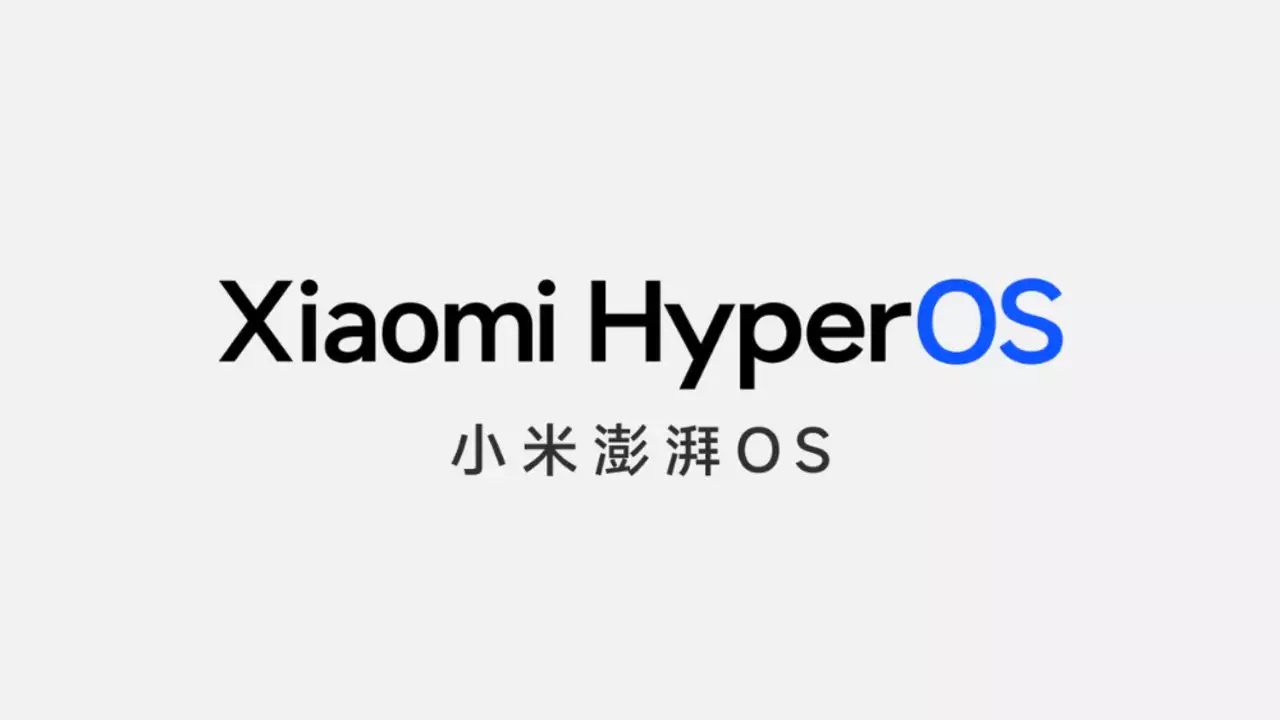The list of gadgets in China that will get the HyperOS developer version upgrade next month has been released by Xiaomi. The latest flagship phone from the Chinese smartphone manufacturer, which comes pre-installed with HyperOS, was released in October along with the new Operating system.
What is Hyperos?
Xiaomi is developing a new operating system called HyperOS to replace its existing MIUI system. The new OS, which was created to tackle the difficulties of overseeing many operating systems on different devices, is distinguished by its emphasis on end-to-end security, intelligent networking, low-level refactoring, and proactive intelligence.
As a “human-centric” operating system, has a cutting-edge visual aesthetic and practical features to improve use. It promises a more user-friendly and functional experience across the growing Xiaomi product line by facilitating smooth device switching, granting remote access to data and applications, and utilizing AI for voice synthesis, picture search, and artwork creation.
Related Topic :- Xiaomi new strong move replace MIUI to HyperOs
Hyperos features :-
The next generation of Xiaomi’s MIUI operating system is expected to bring about a number of enhancements in terms of privacy and security, cross-device connection, AI integration, and speed. Users may anticipate quicker startup times, more fluid animations, and enhanced background app retention in terms of performance. A number of AI-powered capabilities are also introduced by HyperOS, such as text creation, text extraction from photos, doodle-to-image conversion, and natural language image search.
The new OS offers seamless communication across different Xiaomi devices. This allows users to share mobile data, accept calls on other devices, use the rear camera of a smartphone as a webcam for laptops, and carry out work on many devices simultaneously. Furthermore, HyperOS improves security and privacy with granular permission control, powerful encryption, and open-source components.
The updated Quick Settings menu, configurable widgets, a notification system akin to Dynamic Island, and an iOS-inspired lockscreen are all features of the new user interface. The overall goal of HyperOS is to provide Xiaomi’s device ecosystem with a more sophisticated, linked, and secure user experience.
Additionally, HyperOS serves as a bridge between its different devices. As a result, we have features like notification mirroring, the ability to use the phone’s rear cameras as a webcam for Xiaomi laptops, sharing your mobile data with other devices, accepting calls on other devices, and allowing other devices to use your primary device’s homescreen.
Upcoming phones coming with new operating system :-
Initially announced to come pre-installed on the Xiaomi 14 series, is a device operating system that aims to connect all Xiaomi devices into a single, integrated system. Over time, it will be gradually extended to a wider variety of devices. In a recent move, Xiaomi has announced that starting next month, a larger range of Xiaomi and Redmi smartphones and tablets will support HyperOS.
A limited number of Xiaomi and Redmi smartphones will support the forthcoming Xiaomi HyperOS upgrade. Smartphones from the Redmi K50 series, Xiaomi Pad 5 Pro, Xiaomi 12S series, and Xiaomi 12 series are among the compatible models. Eleven gadgets are part of this series:
- Xiaomi 12S
- Xiaomi 12S Pro
- Xiaomi 12S Ultra
- Xiaomi 12 Pro
- Xiaomi 12 Pro Dimensity edition
- Xiaomi 12
- Xiaomi Pad 5 Pro 12.4
- Redmi K50 Ultra
- Redmi K50
- Redmi K50 gaming edition
- Redmi K50 Pro
The Xiaomi Pad 6 is oddly missing from the list of devices scheduled for the impending Xiaomi HyperOS upgrade, even though it was part of the last release. In a similar vein, the newly released Xiaomi 13 series is noticeably absent, while the more current Xiaomi Pad 5 is still eligible. It’s interesting to note that the Xiaomi 12S range was originally left out of the company’s announcement but was subsequently included because it was the first Xiaomi smartphone to work with Leica.

